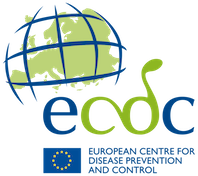Vaccine monitoring
Vaccination programmes have been in place in the EU/EEA for decades, helping to reduce the number of cases of vaccine-preventable diseases, associated complications and societal costs. In the EU/EEA the following diseases are prevented by vaccination programmes in children and adolescents: diphtheria; meningitis and sepsis caused by Haemophilus influenzae type B; cervical cancers caused by human papillomavirus infection; hepatitis, liver failure and cancer caused by hepatitis virus B; measles; meningitis caused by Neisseria meningitidis; mumps and its complications such as orchitis; pertussis; pneumonia; meningitis, and sepsis caused by Streptococcus pneumoniae; poliomyelitis; diseases caused by respiratory syncytial virus (RSV); influenza; rotavirus infection; rubella and congenital rubella syndrome; tetanus, and varicella.
According to global estimates, immunisation prevents 3.5−5 million deaths annually [1]. A modelling study on the impact of vaccination from 1974 to 2024 estimated that global immunisation efforts averted an estimated 154 million deaths, including 146 million among children under five years, and contributed to a 40% reduction in global mortality among infants under one year [2]. Among childhood vaccination programmes, measles vaccination has been the greatest contributor, preventing 93.7 million deaths [2]. It has been estimated that if the World Health Organization (WHO) Immunization Agenda 2030 [3] targets are met, 51.0 million (95% CI: 48.5–53.7) deaths can be avoided between 2021 and 2030, with an average of 5.1 million lives saved per year [4]. Between 2010 and 2023, most of the outbreaks of vaccine-preventable diseases in nine European countries were linked to unvaccinated cases, where parents had refused to vaccinate their children, with measles being the most frequent cause of such outbreaks [5].
In the EU/EEA, all vaccines must undergo multiple clinical trials to confirm they are safe and effective. Data must also be provided on the manufacturing process to ensure that they are of adequate quality before they can be authorised for use. The European Medicines Agency (EMA) has a committee of experts called the Committee for Medicinal Products for Human Use (CHMP), which evaluates every vaccine application and can only recommend a vaccine for authorisation when the scientific evidence demonstrates that the benefits outweigh the risks.
Once vaccines are in use, regulatory bodies in the countries and EMA, through the European Medicines Regulatory Network, continue to monitor their benefit-risk profile. This includes evidence on vaccine effectiveness and detection and management of any new safety concerns. For further details on how vaccines are authorised and monitored for any safety or effectiveness concerns during the post-authorisation phase, see EMA’s website and the European Vaccination Information Portal.
The European Centre for Disease Prevention and Control (ECDC) has multiple systems in place to monitor the effectiveness of vaccination programmes. To generate evidence on the effectiveness of vaccines and their impact on disease trends, ECDC has been coordinating independent multi-country studies since 2007 [6] and these studies are continuing through the Vaccine Monitoring Platform (VMP). The VMP generates real-world, independent evidence on the use, safety, effectiveness and impact of vaccines in the EU/EEA and is jointly coordinated by ECDC and EMA. Its principal aim is to coordinate large post-authorisation vaccine studies at the European level, following transparently-defined research priorities, and to enable exchange of evidence on vaccines.
In addition to monitoring the effectiveness of vaccination programmes, ECDC works closely with the countries through its networks and coordinates the ECDC National Immunisation Technical Advisory Groups (NITAG) Collaboration, which is an EU/EEA network for sharing information, best practices and scientific evidence, and facilitating the collation of evidence. The collaboration provides a structured and sustainable forum for regular dialogue between NITAGs and ECDC, to support evidence-based national recommendations on immunisation programmes. In addition, ECDC works closely with the countries through vaccine-preventable disease and immunisation networks to ensure optimal monitoring and implementation of vaccination programmes.
ECDC is also responsible for the mandatory surveillance of vaccine-preventable diseases in children across the EU/EEA. This surveillance makes it possible to monitor the impact of vaccination programmes; provide timely information to regulators for the updating of existing vaccines when new pathogen strains emerge; define target groups for vaccination, and detect and control outbreaks. Surveillance is conducted according to common EU/EEA case definitions and reporting practices. Surveillance data are securely stored in EpiPulse and disseminated through reports and dashboards.
National vaccination schedules are regularly updated after careful consideration by scientific advisory bodies. Based on the scientific evidence available, each country tailors its immunisation programmes and vaccination schedules to the local context and needs. These local considerations include a wide range of aspects concerning the vaccine itself (safety, efficacy, effectiveness) and the local disease epidemiology. In addition, countries also consider programmatic aspects, such as the need to integrate vaccination within the specific health system services, expected uptake by target groups, expected demand, costs and social considerations, such as equitable access.
Like all medicines, vaccines can cause side effects. All side effects are assessed in the various pre-authorisation phases, before any vaccine is authorised for use. Any side effects reported are transparently described in the Summary of Product Characteristics (SmPC) for healthcare workers and in leaflets on the products, accessible to all vaccine recipients. After a vaccine is authorised in the EU, EMA and EU Member States monitor its safety and gather information on any adverse events. Even coincidental events following vaccination are reviewed, and any signal that might suggest reduced safety is investigated [7].
Evidence-based vaccination policies are a key pillar of public health systems in the EU. Children’s immunisation schedules have been shown to be safe and effective and to have prevented disease and deaths in millions of children across the EU/EEA and on a global basis.
References
- World Health Organization (WHO). Vaccines and immunization 2025. Available at: https://www.who.int/health-topics/vaccines-and-immunization#tab=tab_1
- Shattock AJ, Johnson HC, Sim SY, Carter A, Lambach P, Hutubessy RCW, et al. Contribution of vaccination to improved survival and health: modelling 50 years of the Expanded Programme on Immunization. The Lancet. 2024 2024/05/25/;403(10441):2307-16. Available at: https://www.sciencedirect.com/science/article/pii/S014067362400850X
- World Health Organization (WHO). Immunization Agenda 2030: A Global Strategy to Leave No One Behind. Available at: https://www.who.int/teams/immunization-vaccines-and-biologicals/strategies/ia2030
- Carter A, Msemburi W, Sim SY, Gaythorpe KAM, Lambach P, Lindstrand A, et al. The impact of vaccination for the Agenda 2030: Deaths averted due to vaccination against 14 pathogens in 194 countries from 2021 to 2030. Vaccine. 2024 2024/04/08/;42:S28-S37. Available at: https://www.sciencedirect.com/science/article/pii/S0264410X2300854X
- Baiocchi C, Bhardwaj M. Parental vaccine refusal, non-vaccinated children, and outbreaks of Vaccine-Preventable Diseases (VPDs) in Europe: a systematic review of aetiology and risk. BMC Public Health. 2025 2025/11/19;25(1):4042. Available at: https://doi.org/10.1186/s12889-025-23865-z
- European Centre for Disease Prevention and Control (ECDC). Vaccine Effectiveness, Burden and Impact Studies (VEBIS). Available at: https://www.ecdc.europa.eu/en/infectious-disease-topics/related-public-health-topics/immunisation-and-vaccines/vaccine-0
- European Medicines Agency (EMA). Signal management. Available at: https://www.ema.europa.eu/en/human-regulatory-overview/post-authorisation/pharmacovigilance-post-authorisation/signal-management




